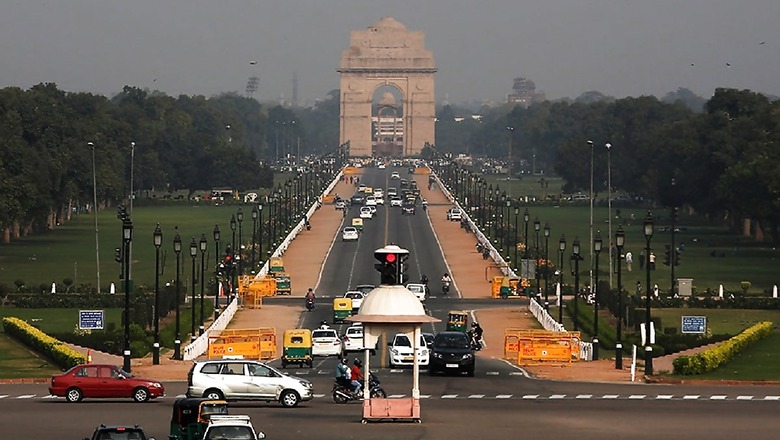
views
A TV anchor being “smited” by the military for expressing unfashionable opinions. Another TV anchor being forced off air for claiming he doesn’t believe a Duchess, police using an advertising van to tell “Being offensive is an offence”, media barons cartelising, censoring speech based on non-transparent definitions of “incitement”, going so far as to censor an elected head of state, a kangaroo impeachment trial with manipulated evidence, riots selectively condoned or condemned by new-age barons, an entire intelligentsia in the grip of fear, not knowing if and when they will be accused of thought crimes and political incorrectness. No, we’re not living in the 18th century reign of terror in France, we’re living in 21st century America and Europe. This is the same environment of arbitrariness, fear and a lack of government that is now preaching the virtues of “democracy” to India.
Two think tanks—an American, with a curiously propagandist name ‘Freedom House’ and some Swedish institute that nobody had ever heard of till March 10, 2021—have decided that India is no longer a democracy. The comical irony of the situation aside, let’s look at these two reports and their methodologies and the origins of these rating systems.
The Birth of Ratings System
The initial impetus comes in 1917 in the wake of the Russian Revolution. Russian bonds, then deemed AAA, were almost overnight turned into junk, with the new government repudiating the debts of the tsarist government. Nothing much happened, however, till the same situation repeated itself in the wake of the 1979 Islamic revolution in Iran. Note the common thread here? The assumption regarding the stability of both Tsar and Shah was based on wishful thinking of the perpetuity of a world war or cold war ally rather than rigorous ground analysis. The consequent shock in both cases provided the market with a need to come up with some analytical mechanism to extricate the management of companies and banks from their gross incompetence.
The means of doing this was a rating mechanism, which could provide the basis for risk assessment of volatile markets. As the jargon surrounding these managerial incompetence extrication mechanisms got more and more refined, the market for these also diversified in keeping with “newspeak”. By late 1990s and early 2000s, “good governance” was the “in” jargon; by late 1990s, with the collapse of the bipolar world order, regime change in the name of “freedom and democracy” became de-rigueur once more, “freedom indices” added to the panoply of allegedly professional listicles available for incompetent managements to hide their incompetence behind a shield of “well look everyone said so, and these were all highly respectable people”.
Obviously, these listicle compilers exist in a mutually symbiotic relationship with managerial incompetence. On the one hand, they significantly reduce the money companies have to spend on gauging political risk. On the other, these listicle houses gain significantly in funding from the same business houses. The dirty secret of the think-tank industry is not the money that is used to fund the actual think-tank but rather the board memberships and consultancies that individual employees of said think-tank get in lieu of their “scholarship”. This is not to say the scholarship in question is entirely quackery, since it follows the established academic norms of methodology, but this is where you can skew the results based on inputs and selection bias.
Need for White Man Validation
Take Freedom House for example – set up expressly as a propaganda institute by Eleanor Roosevelt among others during World War 2 to buttress the US’ newfound ideological position against the Axis—namely “freedom”. Forget the fact that major US ally at the time were the USSR and the Chinese Communist Party—a country that killed more of its citizens than the Germans did and a party that ended up killing more of its citizens than the Japanese imperial army did. The irony that Freedom House existed in a country where black citizens were denied vote was not lost on anybody. Its methodology for gauging democracy is just as ironical, given the complete lack of transparency regarding the “consultants and scholars” it relies upon for its ratings, not to mention their political affiliation.
The European listicle compiler has a greater patina of academic sophistication than the American one. It claims its analysis is based on data points. However, the problem here is that its data points are entirely driven by press reports rather than government databases. After all, it’s so much easier to google things than to spend money coming down to Delhi and provincial capitals to start collating primary data, isn’t it? We are not told which press sources are relied on, hence editorial bias (which like the internet has entered the era of hyper-partisanship and hence hyper-selectivity) is never gauged. Moreover, no amount of press reportage can ever be a substitute for methodical statistics which all these listicle houses attempt to play down using the generic and misleadingly pseudo-scientific term “data points”.
Ultimately though, this really comes down to India and the Indian inferiority complex-driven need for white man validation—that too from a West that is slowly regressing to the Middle Ages, making strong governments irrelevant with a corresponding rise in industrial feudalism. In this age, one has to co-opt the new-age barons to get a good score, much like King John was forced to sign the Magna Carta—hailed as a document of liberation, which actually turned the life of the ordinary Englishman into a nightmare since it gave the feudal lords unrestricted rights to oppress, free of the checks and balances imposed by the king. If you extrapolate this to modern day India, you realize these downgrades were inevitable the moment Narendra Modi gave his “na khaaonga na khaaney doonga” speech—because in one fell swoop, he disempowered the entrenched elites without creating a new elite class to replace them. As the saying goes, hell hath no fury than the wrath of the elites scorned.
Read all the Latest News, Breaking News and Coronavirus News here
















Comments
0 comment